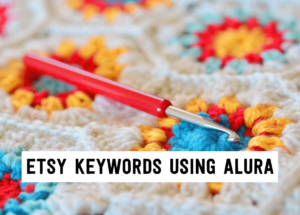
How to find the best Etsy keywords in 3 simple steps using Alura
If you want to be found in search results on Etsy, you need to optimize your product listing for SEO. And if you want to
join
join
There are more and more handmade businesses that are selling digital products these days – be them printable items or digital downloads such as patterns, planners, you name it!
Some sellers have a mix of digital and physical products, others have a completely digital product offering.
And I see many of these handmade sellers run into problems when they are pricing their digital products – because it’s a bit of a different process than pricing physical products.
And there are 4 quite common mistakes that I see them make.
So in today’s article I want to talk about those 4 common mistakes to avoid when you are pricing your digital products, to help you set a price that will sell your products but that also will cover your costs.
So, ready? Let’s dive in.
Before we start talking about the common mistakes, let’s quickly clarify what the term “digital products” means.
When you sell a digital product, there is nothing physical that gets shipped to the customer at any point in the transaction.
So it’s important to understand that they are different from print on demand products— print on demand products still get shipped to the customer, they just get printed or produced or manufactured by someone else that’s using your designs.
Today we’re talking about digital downloads, things like patterns, cards and planners, or artwork that people would print themselves.
The customer will receive digital files which contain the patterns, artwork, organizers, calendars, meal planners . . . you can see there are many many printable products that can be sold digitally!
So we are basically talking about anything that’s digitally available, and that people can instantly download to their computer.
Now that we’ve covered what exactly the term digital products encompasses, let’s move on and talk about the three common mistakes I see handmade sellers make when pricing their digital products.
The first mistake I see sellers make is forgetting there is still a cost involved. It happens very easily because with digital items you think that because you sell digital files, you don’t really have a cost to “make” them.
Of course there is no material or supplies cost, you won’t have to account for things like wire, beads, paint, felt – because of course your product is digital.
There is also no labor cost. Now you may have a bit of labor if you manually process orders and send the digital files out, but if that’s the case, I would actually really recommend you consider automating that. There are many tools now available to help you make the download instantly available to your customers without you having to send it manually, which frees up your valuable time.
But if your digital files involve a bit of personalization or customization then by all means you would add that labor cost into your total cost calculation.
The main cost you need to account for in digital products – that many sellers overlook – is overhead. Because even if you sell only digital items, you do have an overhead.
Overhead prices might include:
It might be for design software that you have to subscribe to (like Adobe, Photoshop, or Canva).
You also want to count costs like website or hosting fees, utilities, rent for your workspace – you want your digital pricing to take those into account.
So for example, if you add up the costs above you may find that you actually have a $250 overhead each month – when you add up your website and hosting fees, software fees, and the like, it starts to add up quickly.
You want to be clear on how much your overhead is— what those fixed costs for you are every month that you incur no matter how many products you sell.
And then you want to use that overhead cost that you calculated as your break even point.
NOW you can ask yourself “how many products do I need to sell at what price point to cover this $250 overhead expense that I’m going to have every month? I.e. how many products do I have to sell at what price point to break even, to just get to the point where anything after that will start to make me a profit?”
So if you decide to price your digital patterns at $8 each, you’re going to have to make 32 sales before you start seeing a profit.
BUT, if you sell your patterns at $12 each you only have to sell 21 to break even.
Now I’m not saying $12 is the best price, that’s just an example.
What you need to do next is ask yourself if it’s easier to sell 32 of your products at $8 in your specific niche, considering your market and the research that you have done? Or is it easier to sell 21 products at $12?
You can see how very important it is to account for these costs in your product price, or you may set your price too low and not cover your expenses, or struggle to make a profit.
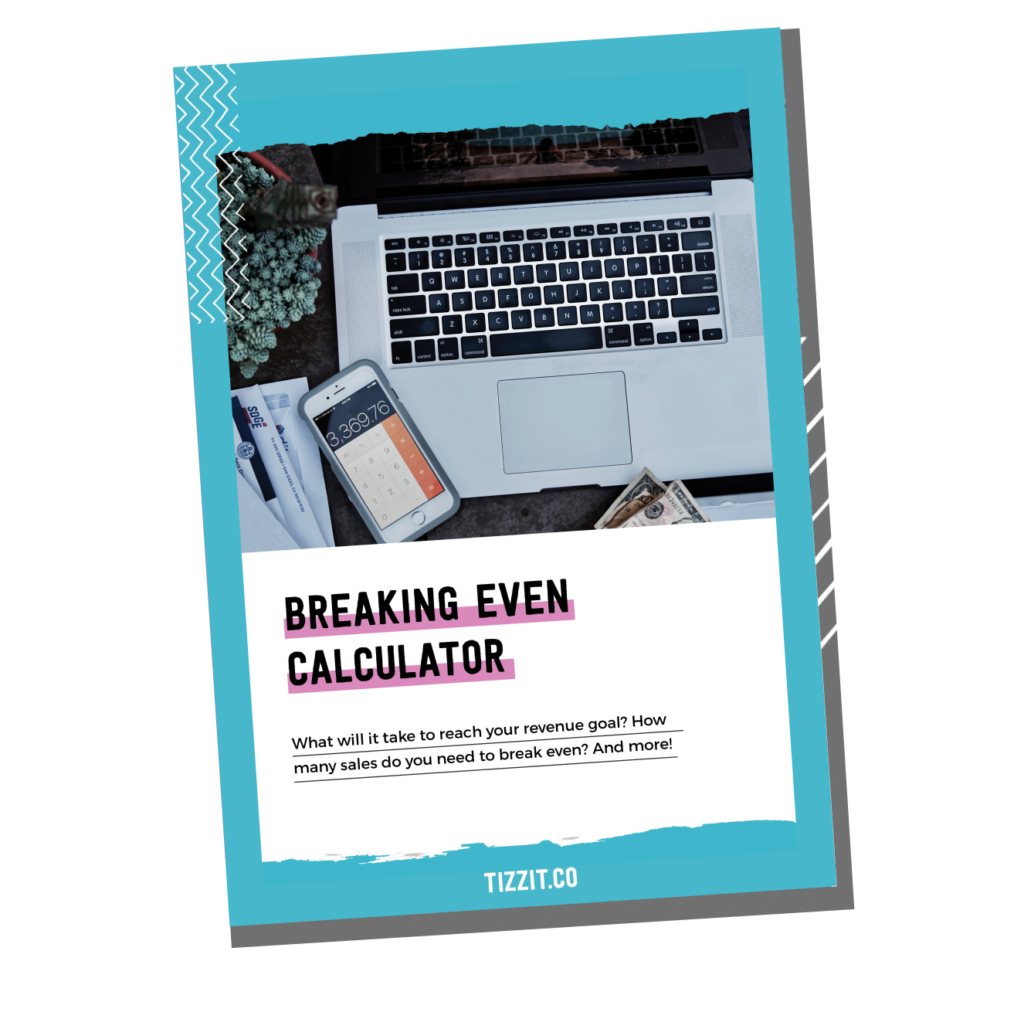
[free] handmade shop breaking even calculator
HOW MUCH MONEY YOU NEED TO MAKE TO BREAK-EVEN? HOW MANY SALES YOU NEED TO MAKE EACH MONTH TO TAKE YOUR BIZ FULL-TIME?
THIS CALCULATOR WILL DO THE MATH FOR YOU!
The next common mistake I see in digital product pricing is forgetting to factor in perceived value and perceived costs when choosing a price, and basing your price on competitors’ prices only.
The perceived value of your products is the perceived benefits that your ideal customers feel they get by purchasing your products, minus the perceived cost that they foresee.
To calculate these you have to clearly understand who your ideal customer is – because the perceived benefits of your products and the perceived cost of your products are going to be very different based on who you’re asking.
For example, let’s say you sell patterns that can be used on Cricut machines. And each of your patterns includes a tutorial video showing how to load your pattern into the machine, or perhaps some color ideas for color combinations that look very good together for this pattern.
You know that by including extras that benefit someone who is just getting started using a Cricut machine, your products will be very valuable in the eye of that specific customer . . . but not as valuable to someone who is very experienced and just wants the pattern.
The customer who is a beginner will see your listing and say I will pay a bit more for that because I value the tutorial and color ideas since I’m not very knowledgeable about either one yet.
But the experienced customer may say “I don’t really need all those extra bells and whistles and I don’t want to pay more for them when I can buy just a pattern for a bit cheaper.”
So you can see that even in the same niche you want to be really clear on who you’re targeting with each product and each collection and with your shop in general so that you can understand what the perceived value of each of your items is in the eyes of your ideal customer.
When pricing each product be sure you think about what are the perceived benefits of this specific product, the one that you’re thinking of pricing right now, in the eyes of your ideal customer?
Once you’ve done that, you also need to consider the perceived cost.
Some digital products require that the customer do more work and/or purchase additional things after buying the digital product.
For example, if you order a digital design for wedding invitations, you will still need to get online, upload that design, and order it from a printing center.
Or if you order artwork, you will need to print that artwork and buy a frame to display it in.
The customer will factor that time and extra money into their purchase decision, because they also have the option to order pre-printed wedding invitations that will be shipped to them, or pre-framed artwork that arrives ready to hang on their wall.
And they will compare cost vs time & effort before making their purchase decision.
So when you’re looking at perceived value and how your ideal customers are looking at your products, you need to consider both the perceived value they are getting from them AND the perceived costs they will encounter if they purchase your product.
And factor both of these into your pricing decision!
Then you work through different pricing and resulting sales scenarios. If you’d like to dive deeper into this, we talk about how to do it and walk you through the process in the Tizzit HQ pricing course.
Now on to the 3rd mistake I see sellers make when pricing digital products, which is that sellers think they can’t change their price once they set it.
And I want to tell you – don’t feel like once you set your price you need to leave it there forever, because you should always be testing and experimenting and adjusting your prices based on what you see and what you learn.
Nothing is set in stone and especially not with digital products— and you don’t need to find the perfect price immediately.
In the digital pattern example we talked about earlier, you will never know if $8 is better than $12 for your digital patterns if you don’t experiment and try to slowly increase your price to see what the market can bear and what happens to your sales when you do.
The fancy business term for this is “price elasticity”: how much the demand for your product can change when you increase or decrease the price of your products.
You might find, for example, that $9 and $10 prices don’t reduce your sales, but at $11 you encounter that psychological upper limit where your customers decide that’s too expensive.
Or maybe not – you may find that you can increase your price to $13 or $14 before you hit your upper limit!
So this is really something that you have to keep in mind, you have to be testing, you have to be experimenting. You don’t only look at your quantity of sales, because even if you sell less product at $13 you may make a lot more money!
The final mistake I see sellers make that I want to address in this article is trying to include design time in your pricing equation.
I frequently have sellers ask “hey Deb do I account for the time that I spent actually creating my digital products in my labor costs?”
And the short answer is no.
The time it takes you to come up with the idea for your design, or the “design time” for your digital products, is not a “labor cost” per se.
If it takes you 10 mins to come up with a brilliant design, it doesn’t make it less valuable than if it takes you 20h, and vice versa.
And – if you were to include 20h in your labor costs or overhead, it would absolutely blow up your prices and be unfair to your customers because after the original design is done – you can actually re-sell the same digital product *without* needing to re-invest 20h, that’s the beauty of selling digital products – that’s what makes them very scalable.
So how do you afford the time to create new designs and come up with new ideas? By making sure your profit margins are healthy enough – but NOT inside of your labor or overhead costs.
So in that sense yes it is included in your price, but as part of your profit margin – not inside of your overhead or labor costs.
You can see that there are a LOT of variables to consider when pricing your products – digital or physical – and I have an article that tells you how to price handmade products for you to read next..
Thanks for reading, and until next time, aurevoir!
you might also like…
related articles

If you want to be found in search results on Etsy, you need to optimize your product listing for SEO. And if you want to
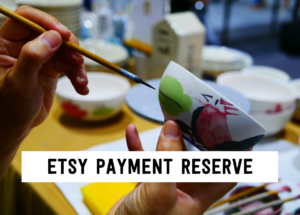
There has been a lot of talk in the Etsy community — and I mean A LOT of talk — about Etsy’s payment account reserve
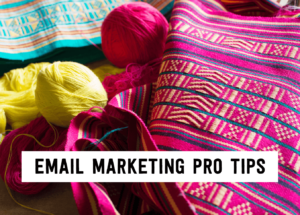
Anyone who knows me knows that I am a HUGE advocate for using email marketing to grow and scale your handmade business. But you may
disclaimer
subscribe to youtube
THE LAUNCHPAD
get in touch
We acknowledge and give thanks to the Budawang and Yuin people, the Traditional Owners of the land we work and live on. We pay our respects to all Aboriginal and Torres Strait Islander Peoples and elders past, present and emerging.
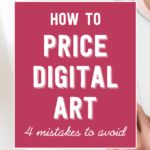
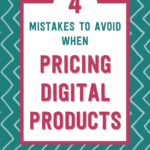

grab the free
break-even calculator